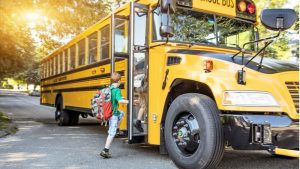Ransomware continues to be the biggest issue for most K-12 school districts across the country, according to Doug Levin, co-founder and national director of the K12 Security Information Exchange.
As the health care and education sectors have become prime targets for cyberattacks, experts from those sectors expressed their needs on May 18 for more funding and Federal collaboration to better protect the cyber posture of schools and hospitals.
Is Wi-Fi service coming to a school bus near you? The answer to that question may be a resounding yes, if Federal Communications Commission (FCC) Chairwoman Jessica Rosenworcel has anything to say about it.
While the COVID-19 pandemic caused millions of students to have their education disrupted during the 2020-2021 school year, teachers have since reported finding limited strategies that could be helpful in mitigating learning loss, the Federal government’s top watchdog agency said in a new report.
The Virginia School Board Association and wireless service provider Kajeet on May 10 announced 2022 Virginia Education Broadband Grant awards totaling $270,000 to nine Virginia school districts. Each winning school district was awarded $30,000, which can be used to implement a combination of “Kajeet Education Broadband solutions, including Wi-Fi hotspots, school bus Wi-Fi, LTE-embedded Chromebooks, […]
While there are a lot of ways schools can tackle the issue of sustainability, many K-12 schools are utilizing technology – especially distance learning – to be more sustainable, according to a new white paper from Verizon.
Although cybersecurity continues to be the top priority for K-12 IT leaders, they underestimate the risks to their systems, according to a new survey by the Consortium for School Networking (CoSN).
With at least a half-million cybersecurity positions unfilled in the United States, Federal experts and educators said closing the gap on the shortage of cybersecurity professionals begins with cyber education efforts, particularly at the K-12 level.
A new report published by the non-profit K12 Security Information Exchange (K12 SIX) finds that while the number of publicly-disclosed cyber incidents at K-12 schools decreased in 2021, the actual number is “surely bleaker,” emphasizing the need for more and better information sharing about K-12 cyber incidents.
In the wake of a Government Accountability Office (GAO) report encouraging the Departments of Education and Homeland Security (DHS) to update K-12 cybersecurity guidance, several Democrat senators have written to both agencies urging them to heed GAO’s recommendations, and establish critical infrastructure council structures to advance the issue.










